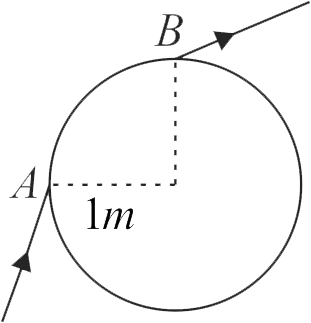356938
Read the Statement - A and Statement - B carefully to mark the correct options given below:
Statement A :
The equivalent resistance of resistors in a series combination is smaller than least resistance used in the combination.
Statement B :
The resistivity of the material is independent of temperature.
356940 A wire of length \({l}\) and resistance \(100\,\Omega \) is divided into 10 equal parts. The first 5 parts are connected in series while the next 5 parts are connected in parallel. The two combinations are again connected in series. The resistance of this final combination is:
356938
Read the Statement - A and Statement - B carefully to mark the correct options given below:
Statement A :
The equivalent resistance of resistors in a series combination is smaller than least resistance used in the combination.
Statement B :
The resistivity of the material is independent of temperature.
356940 A wire of length \({l}\) and resistance \(100\,\Omega \) is divided into 10 equal parts. The first 5 parts are connected in series while the next 5 parts are connected in parallel. The two combinations are again connected in series. The resistance of this final combination is:
356938
Read the Statement - A and Statement - B carefully to mark the correct options given below:
Statement A :
The equivalent resistance of resistors in a series combination is smaller than least resistance used in the combination.
Statement B :
The resistivity of the material is independent of temperature.
356940 A wire of length \({l}\) and resistance \(100\,\Omega \) is divided into 10 equal parts. The first 5 parts are connected in series while the next 5 parts are connected in parallel. The two combinations are again connected in series. The resistance of this final combination is:
356938
Read the Statement - A and Statement - B carefully to mark the correct options given below:
Statement A :
The equivalent resistance of resistors in a series combination is smaller than least resistance used in the combination.
Statement B :
The resistivity of the material is independent of temperature.
356940 A wire of length \({l}\) and resistance \(100\,\Omega \) is divided into 10 equal parts. The first 5 parts are connected in series while the next 5 parts are connected in parallel. The two combinations are again connected in series. The resistance of this final combination is:




